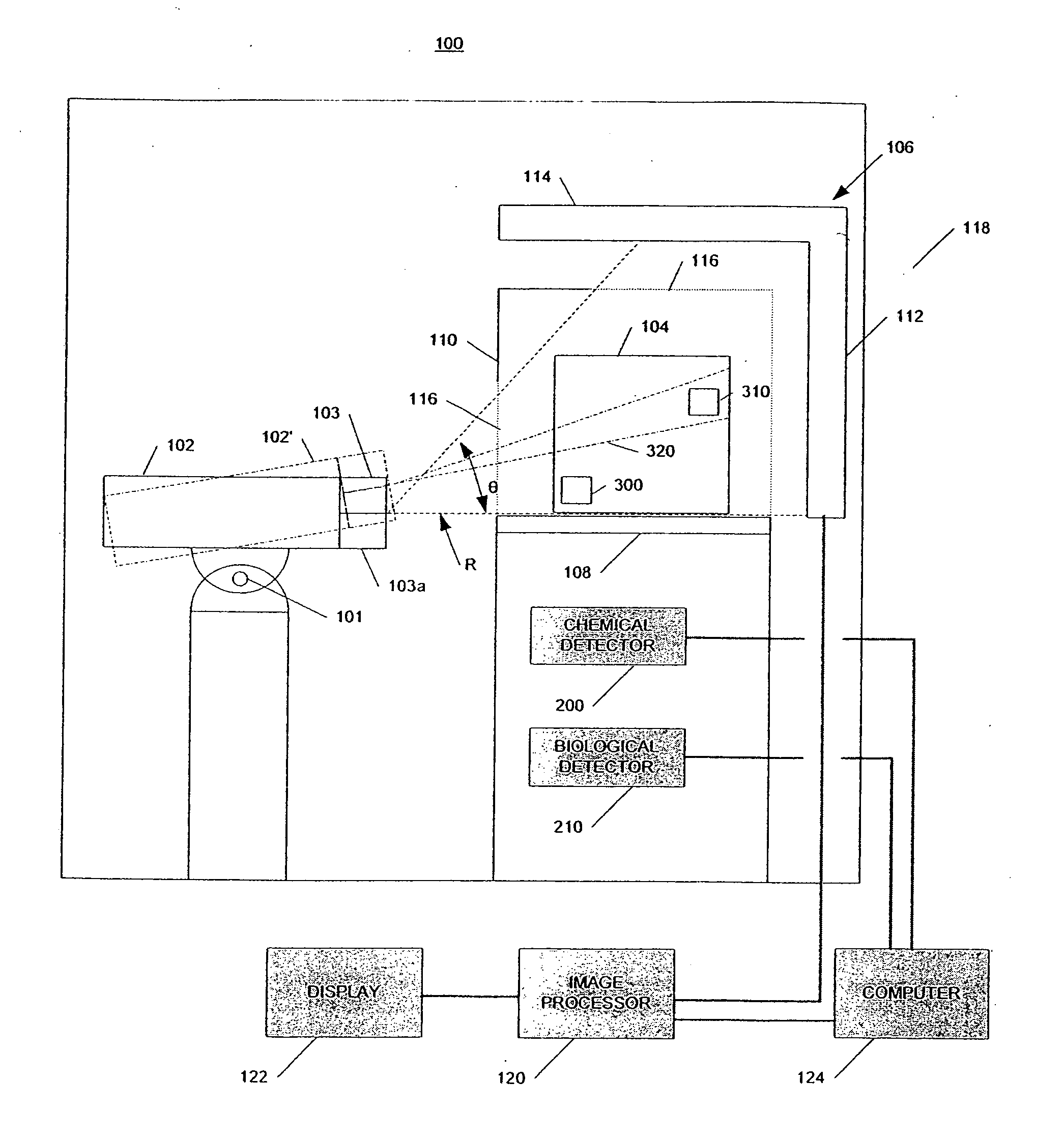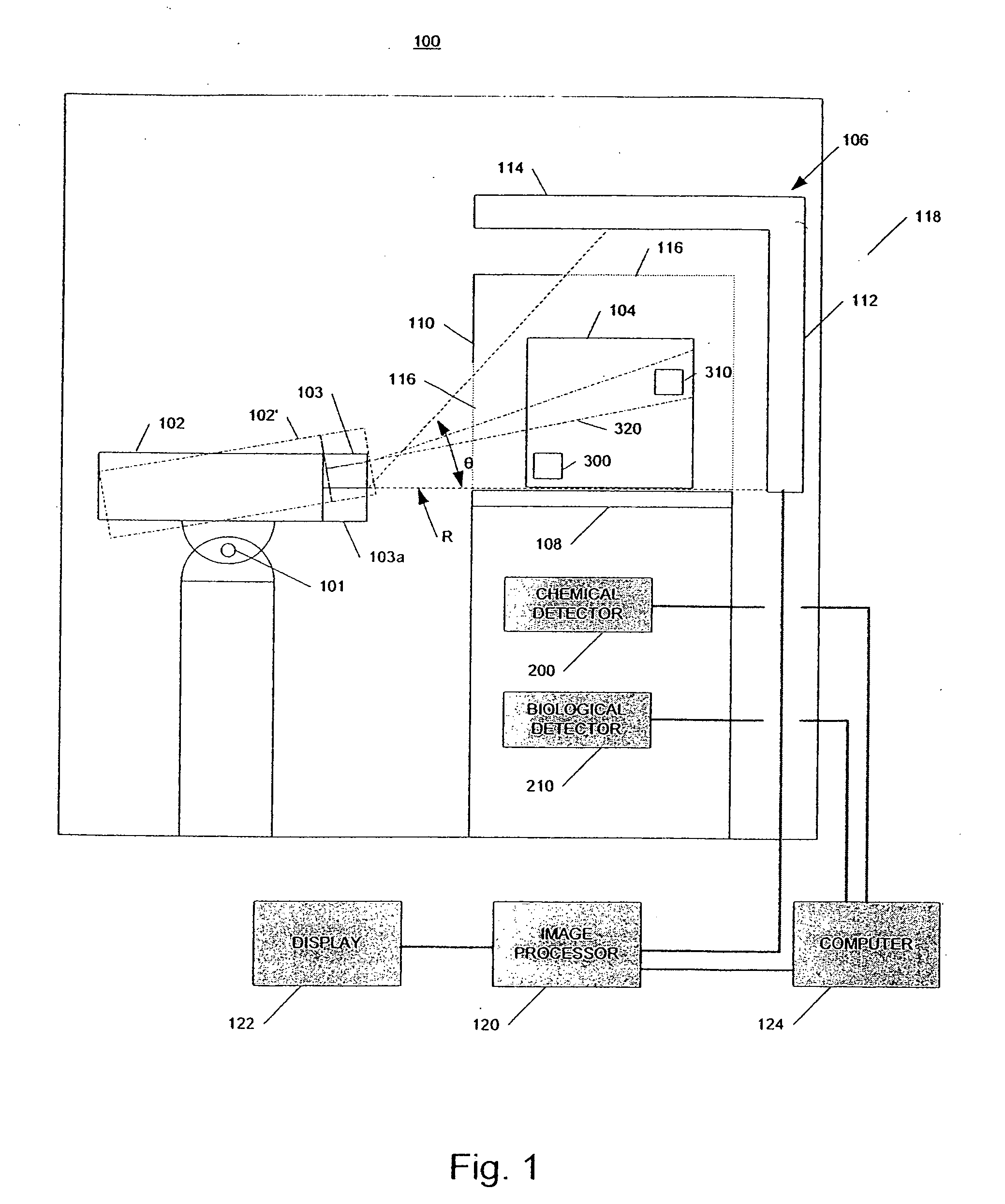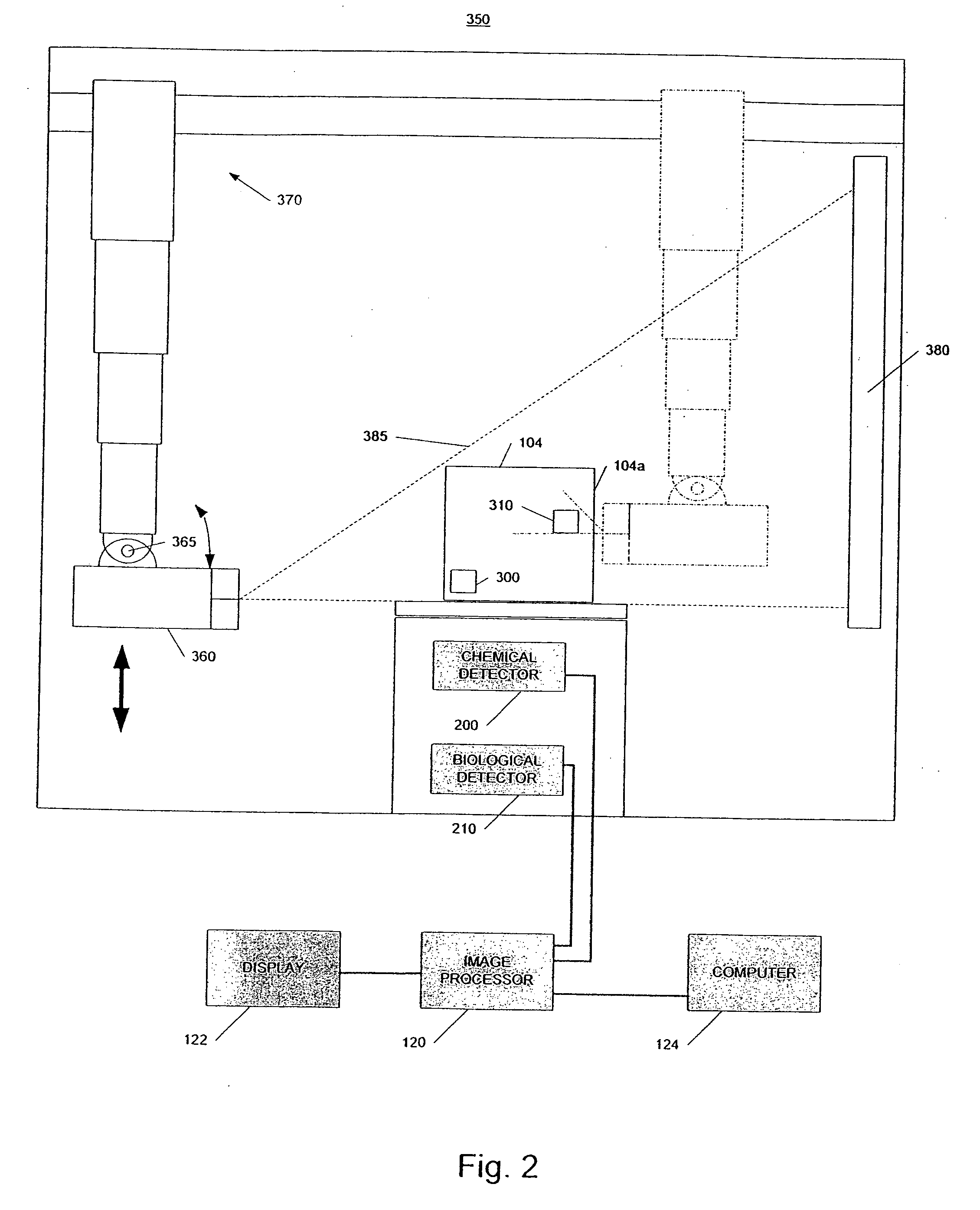Radiation scanning and disabling of hazardous targets in containers
a technology for hazardous targets and containers, applied in material analysis, material analysis using wave/particle radiation, nuclear engineering, etc., can solve the problems of electrical components such as semiconductor devices, susceptible to damage and/or destruction from radiation, and achieve the effect of prolonging storage and stopping sprouting
- Summary
- Abstract
- Description
- Claims
- Application Information
AI Technical Summary
Benefits of technology
Problems solved by technology
Method used
Image
Examples
Embodiment Construction
[0028]In accordance with embodiments of the invention, a system and method identifies a potential threat or hazardous object in a container, such as a cargo conveyance, and disables the potential threat in whole or in part using radiation from a radiation source. As used herein, the term “radiation” is meant to include, but should not be limited to, beams of electrons, X-ray radiation, gamma ray radiation and neutrons. In some embodiments, the system uses radiation scanning, such as X-ray scanning, chemical detectors, and / or biological detectors to identify at least a potential presence of high atomic number material or high density material, that could be special nuclear material (“SNM”) or shielding for SNM, chemical agents, and / or biological agents. Although not required, the same high energy radiation source used in scanning the container may be used to disable the potential threat.
[0029]FIG. 1 is a schematic representation of an example of a radiation inspection / disabling syste...
PUM
| Property | Measurement | Unit |
|---|---|---|
| energy | aaaaa | aaaaa |
| width | aaaaa | aaaaa |
| length | aaaaa | aaaaa |
Abstract
Description
Claims
Application Information
 Login to View More
Login to View More - R&D
- Intellectual Property
- Life Sciences
- Materials
- Tech Scout
- Unparalleled Data Quality
- Higher Quality Content
- 60% Fewer Hallucinations
Browse by: Latest US Patents, China's latest patents, Technical Efficacy Thesaurus, Application Domain, Technology Topic, Popular Technical Reports.
© 2025 PatSnap. All rights reserved.Legal|Privacy policy|Modern Slavery Act Transparency Statement|Sitemap|About US| Contact US: help@patsnap.com



